
Overview
Guardians of Pashmina-Photography tour of Changpas of Changthang – Overview
Photography tour of Changpas of Changthang
Pashmina or as the west knows it – Cashmere is the finest wool from the land of Changthang and it literally means ‘soft gold’ in Kashmiri. This fine thinner-than-hair wool is hand-woven into shawls by the Kashmiri artisans and sold world over. But lesser known are the goat herders, the nomadic tribe endemic to the vast windswept high-altitude (4500m) cold desert plateau – Changthang. It is located at the South-Eastern corner of Ladakh extending 1600kms eastward into Tibet and into modern day China. With expansive highlands and giant sapphire lakes, it is home to the Changpas, the wandering nomads of this land.
For generations, they have roamed its huge swathes of nutritious pastures with their flocks weathering severe temperatures, high winds, and inhospitable terrain. It is warm in the summers and severely cold in the winters, dropping to -35 to – 40-degree Celsius.It is only in these extreme weather condition does the pashmina goats thrive to yield the best pashmina wool. Throughout the year the nomads keep moving with their huge flocks of goats & sheep along with yaks, horses and ferocious Tibetan Mastiffs which guard the flocks against predators – mainly wolves. Their tents are made of black yak wool to protect them from the harsh winds as they move from one encampment to the other. This yak-wool tent earns them the name ‘Rebo’ – called so by the local Ladakhis. The Rebo cover vast stretches of land over a year’s journey and some stunning locations, still hidden and unknown to most of us non-nomads. The Changpas have and are still living this hard way of life following customs and keeping the tradition of their tribe alive even today, untethered to the modern society.
Another aspect that helps is the protection of the Indian side of Changthang, as ‘Changthang Cold Desert Wildlife Sanctuary’ which consists of two large, world famous lakes Pangong Tso and Tsomoriri and much smaller, yet amazing ones across the region which totals to about 11 lakes and 10 marshes. It is only in recent times has this region along the Tibetan border been thrown open to tourism although with a permit issued from Leh. Changthang is also home to many rare species of migratory birds and other fauna including the black-necked crane, Tibetan wild ass(Kiang) and the Argali.
Our trip is designed to give explorers and photography enthusiasts a peek into the life and culture of these rugged dwellers and exotic landscapes that is their home! We start off with a 3-day acclimatization and mini photography sessions in and around Leh town where we cover stunning monasteries, ancient palaces, and little unknown nooks that will delight you. On Day 3, after we are better acclimatized we move to the heartland of the Rebo, in the backyard of the breathtaking Tsomoriri Lake. After a couple of nights, we move higher to a sprawling Valley surrounded by mountains all around and camp close to a lake.
The Photography tour of Changpas of Changthang promises to be a feast for the eyes, with unimaginable visual imagery of India’s frontiers documenting the lesser known and changing lives of the Rebos of Changthang. This trip is ideal for photographers, people seeking quiet time and explorers in quest of unknown spectacular locations.
Who is this for?
This photography tour is for anyone interested in learning about the Changpa’s way of life. You need not be a professional to join the tour. We’ve crafted it keeping in mind the needs of beginners as well as more serious photographers.
What will you learn?
The tour is crafted to help participants document the way of life of the Changpa nomads right from portraits, the landscape they live in, to the little details of their everyday life. Beside this, we will also learn how to shoot the night sky as well one of those surreal looking time-lapse videos of the mountains.
 TRIP HIGHLIGHTS
TRIP HIGHLIGHTS
- Visit Indian Himalaya’s wild and restricted frontiers
- Chance to document the little known lives of Changthang Nomads – the Rebo
- Hone photography skills with an expert mentor in stunning locales
- Sapphire Tso Moriri and other hidden high altitude lakes
- Camping in tents under a zillion stars
ITINERARY AT A GLANCE
Day 01:Arrive Leh(3500m)- Rest and acclimatization
Day 02:Sightseeing – Monasteries and Palaces
Day 03:Leh Heritage Walk
Day 04:Drive to Tsomoriri(4500m) via Tsokar
Day 05:@Nomad Camp 1
Day 06:Drive to Nomad Camp 2(4800m)
Day 07:@Nomad Camp 2
Day 08:@Nomad Camp 2
Day 09:Drive to Leh via Mahe
Day 10:Depart
Cost Inclusions
Guardians of Pashmina – Cost Details
COST:
Indians : INR 79500 + 5% GST per person
Foreigners: USD 1325 + 5% GST per person
COST INCLUDES
- Expert Photography mentor with vast Experience
- Experienced Camping Crew: Trip Leader and support staff for camping day in Changthang
- Accommodation: Entire accommodation during the trip
- A class hotel in Leh.
- Tents in Changthang
- All Transport as mentioned in the itinerary in Tempo Traveller – 14 seater
- Meals as mentioned in the itinerary. All meals during camping and only breakfasts in Leh
- All Permits and taxes – 5% GST
COST EXCLUDES
- Airfares and Travel Insurance
- Photography equipment, personal equipment or sleeping bags
- Any additional transport or activities apart from the trip itinerary
- Expenses rising through unforeseen conditions like bad weather, natural calamities, flight cancellations, etc
- Rescue and evacuation services
- Expenses of any personal nature like phone calls, drinks, cigarettes, souvenirs, laundry, etc
- Tips
- Anything not explicitly mentioned in Cost includes
Itinerary
Guardians of Pashmina – Itinerary
Day 01: Arrive Leh
Fly into Kushok Bakula Rinpoche Airport in Leh, one of the highest mountain airports in the world. The excitement begins mid-air as you gaze down at never ending ranges of mountains, glaciers and rivers. Also seen is the azure Tsomoriri Lake, one of our key locations for our upcoming trip. As you walk out of the airport you will be received by our Leh representative and driven straight to the hotel in Leh(15 mins drive). Check-in to the hotel, have breakfast and relax till noon.
Our comprehensive briefing will take place post lunch before heading out to the charming streets of Leh to checkout the bazaar.
Leh is at a very high altitude and it is paramount to give your body adequate time to acclimatize to the rarefied oxygen levels. Avoid any kind of exertion for the first 2 days, drink lots of water and eat well.
Meals: B; Overnight Leh Hotel.
Day 02: Sightseeing – Monasteries and Palaces
Today is another relaxed day and we drive around Leh to some iconic monasteries and palaces.
Ladakh has some amazing monasteries all around its land. But some of them stand out either for their architectural beauty or stunning location. One such is Thiksey monastery which is a miniature resemblance of the Potala Palce of Tibet. Apart from this, we visit Shey Palace, the erstwhile capital of Leh and return to Leh for lunch.
We visit Shanti Stupa early evening and take some good shots of Tsemo castle and Leh Valley in the setting sun…a great vantage point to click some amazing shots of Leh Palace and Tsemo Castle with the rugged mountainous background.
Meals: B; Overnight Leh Hotel.
Day 03: Leh Heritage Walk
Leh has a long history , having been at the crossroads of Asia and part of the silk route. Their were bazaars in Leh in the ancient times when none existed in other parts of the India. It is amazing how it stands now with one part of town called Old Leh town and the other new, and how the old has mixed with the new. Age old traditions continued till this date, ancient architecture and some customs. It is a walk rich in information and visual imagery.
In the evening we make our way to Leh Palace and a short hike up to Tsemo Castle for some stunning shots of Sunset over Leh Valley and the Stok Range. Meals: B; Overnight Leh Hotel.
Day 04: Drive to Tsomoriri(4500m)
Our main workshop begins today with a long drive to Tsomoriri over Taglang La and Tsokar Lake. The drive is about 8 hrs, but we will have multiple stops on the way increasing travel time. Expect stops around the pass, at Morey plains, Tsokar Lake and other nomad areas on the way. The first signs of Changpa nomads we see once we cross Taglang La towards the right. The changpas keep shifting camps depending on the season. The drive is very scenic and we drive over 2 passes along the way. Tsokar(White Lake) is called so because of the salt deposits around it is famous as the breeding grounds for migratory birds like the black necked cranes, bar headed geese, ruddy shelducks, etc. Also the grazing grounds for Yak herders. There is a famous trek which starts from here and reaches Tsomoriri Lake.
We see glimpses of the magnificent Tsomoriri as we approach the lake and Korzok, is like a village out of a fairy tale. We set up camp in the Nomad grounds a little away from Korzok to be in proximity to the Nomads. In the late evening we take a small walk around the nomad camps to catch the evening activity.
Post dinner, we can settle down to capture the night skies!
Driving Time: 10 hrs.
Meals: BLD, Overnight Camp.
Day 05 – Day 08: @ Multiple Nomad Camps in Changthang Area
The next 4 days we spend most of our time living around and documenting the lives of Changthang Nomads in some spectacular settings and azure high altitude lakes close by. When we want to take a break from our cameras we can set out on short hikes or some quiet meditative time next to the pristine holy lakes!
Driving Time: 5-6 hrs.
Meals: BLD, Overnight Camp.
Day 09: Drive to Leh
We drive back to leh via Mahe Bridge, stopping for lunch at Chumathang Hot Springs. It’s amazing how boiling water is pushed out through geysers just next to the glacier fed cold Indus! The drive is all along the Indus till Leh and at Upshi we complete a circuit where we join the Manali-Leh Highway and drive back to Leh town.
Free time in the evening when you can shop or just chill in one of the restaurants enjoying gourmet cuisine.
Driving Time: 8-9 hrs.
Meals: BL, Overnight Camp.
Day 10: Departure
Early morning departure to the airport for flight to Delhi. Trip Ends!
Meals:B
Gallery
Guardians of Pashmina – Images
Extended Gallery on Facebook

Changthang Photo Tour – Aug 2018
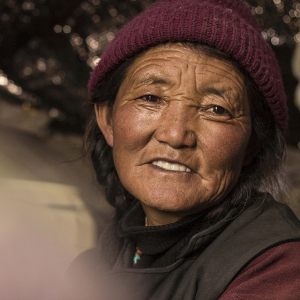
Guardians of Pashmina – Sep 2017
Blog:

A visit to the land of Changpa Nomads and Sapphire Lakes
Proceed to Medium
Mentor
 Mayank Soni is a travel photographer and filmmaker based in Mumbai. His love for the outdoors and indigenous cultures has led him to explore a range of remote corners across India. He has lived with the last surviving head hunters of Nagaland, trekked across the frozen Zanskar river in grueling minus 20 degree temperatures and explored the birding paradise of Eaglenest in search of the newly discovered species of Bugun. He regularly contributes to Lonely Planet Magazine India, National Geographic Traveller Magazine India and Conde Nast Traveller India as well as BBC Capital. Currently, he is working on a project to document the life of the Dard people of Gurez located on the Indo-Pak LOC.
Mayank Soni is a travel photographer and filmmaker based in Mumbai. His love for the outdoors and indigenous cultures has led him to explore a range of remote corners across India. He has lived with the last surviving head hunters of Nagaland, trekked across the frozen Zanskar river in grueling minus 20 degree temperatures and explored the birding paradise of Eaglenest in search of the newly discovered species of Bugun. He regularly contributes to Lonely Planet Magazine India, National Geographic Traveller Magazine India and Conde Nast Traveller India as well as BBC Capital. Currently, he is working on a project to document the life of the Dard people of Gurez located on the Indo-Pak LOC.
More at www.mayanksoni.in
WHAT TO PACK – CAMERA EQUIPMENT
- Lenses – wide angle, telephoto, 50mm (optional 1x or 2x converter, 100-400mm for wildlife)
- Graduated Neutral Density Filter (round or square)
- 2 extra batteries
- 2 extra SD or CF memory cards
- Solar charger
- Camera cleaning kit
- Tripod
- Macbook/laptop
- Card reader
- Portable back-up hard disk



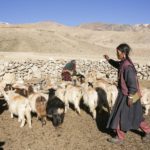





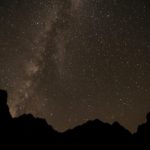


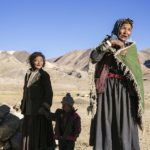







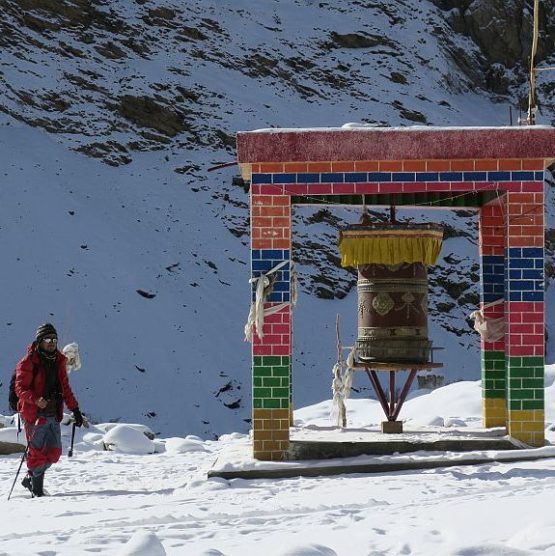
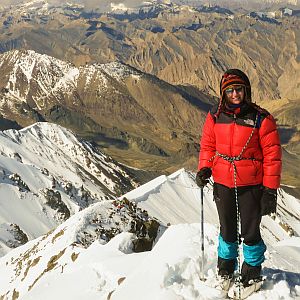



Reviews
There are no reviews yet.